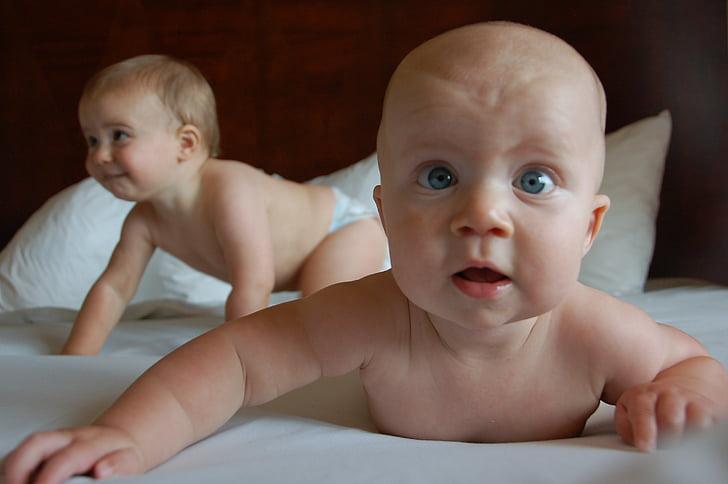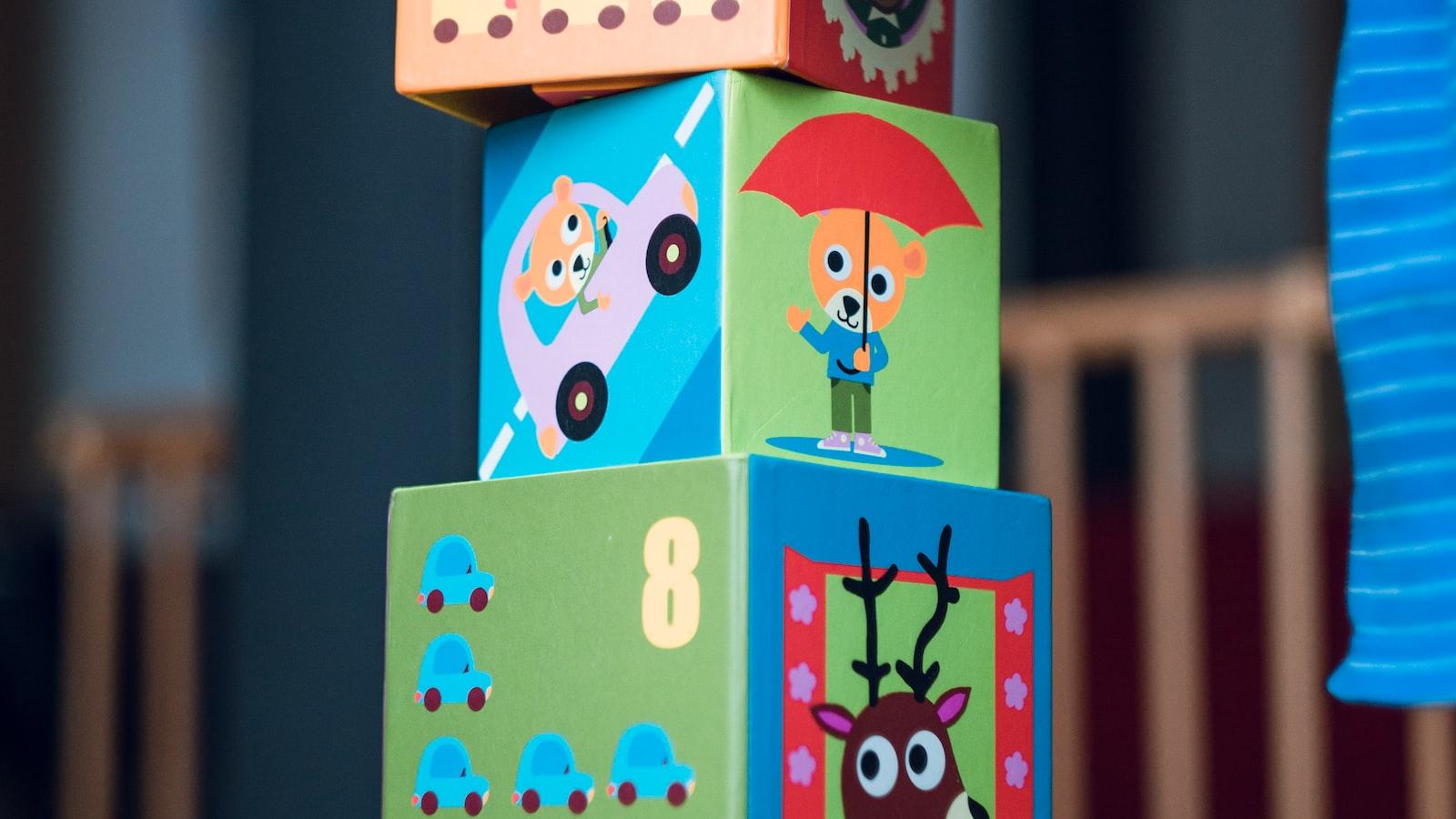Understanding cause and effect is an important part of early childhood development and babies begin to understand the concept from a very early age. The ability to recognize cause and effect helps babies learn new skills, understand the world around them, and begin to develop their own problem-solving capabilities. So when do babies understand cause and effect? Read on to find out.Babies start to understand cause and effect around the age of 18 months, when they begin to develop problem solving skills and become more independent. As they get older, their understanding of cause and effect will continue to develop and expand.
Helping Babies Understand Cause and Effect
Helping babies understand cause and effect is an important part of their development. It helps them learn how to navigate the world around them and hone their problem-solving skills. Understanding cause and effect can also help babies learn language, as they begin to understand that words lead to actions.
One of the best ways to help babies understand cause and effect is through repetition. When babies see the same action happen over and over again, they start to make connections between the two. For example, if parents feed their baby when they cry, the baby will eventually learn that crying leads to food.
Parents can also use props and toys to show their baby how things work. For example, a wind-up toy can help demonstrate how pushing a button leads to movement. Parents can also use simple puzzles or blocks to show their baby how two separate pieces fit together or how one action leads to another.
It’s also important for parents to give their baby time to explore on their own. Giving them a safe space with age-appropriate toys allows them to figure things out for themselves without any interference from adults. This helps them build confidence in their own problem-solving abilities as well as develop their motor skills.
Finally, parents should talk with their baby about cause and effect throughout the day in a way that is appropriate for their age level. Pointing out when something happens because of another action (e.g., “The ball rolled because you pushed it”) will help your baby recognize patterns and make connections between events more easily in the future.
Signs Babies Understand Cause and Effect
It is remarkable to watch a baby’s development and observe how quickly they begin to understand the cause and effect of their actions. While the exact age at which babies start to show an understanding of cause and effect may vary, there are some signs that can help you identify when your baby is beginning to understand this concept.
One of the earliest signs that a baby can understand cause and effect is when they discover that they can make things happen by shaking or banging objects. For example, if your baby shakes a rattle or bangs a spoon on the high chair tray, they will soon recognize that their actions make noise. This understanding leads them to experiment more with different objects in order to explore the world around them.
Another sign of cause and effect understanding in babies is when they reach out for an object or person with their hands. When your baby does this, they have already developed an understanding that reaching out will get them what they want. This action also demonstrates their understanding that certain movements result in specific outcomes – something babies will continue to develop as they grow older.
Babies also demonstrate an understanding of cause and effect when it comes to games like peek-a-boo – where they understand that covering their face then revealing themselves will elicit a reaction from those around them. This shows that your baby has begun to recognize patterns in behavior and its consequences, which is essential for future learning and development.
Finally, your baby may show signs of cause and effect understanding when you talk or sing to them – even before saying words themselves! As soon as your baby starts responding with coos and babbles, it demonstrates their knowledge that sound patterns result in response from others around them.
Overall, all these signs are evidence of your baby’s growing ability to understand the concept of cause and effect – something which will continue to develop as they grow older!
Cause and Effect Activities for Young Children
Young children can start to learn about cause and effect by engaging in activities that help them understand how one thing can lead to another. Simple games and activities can help children start to make connections between events and their consequences. Examples of activities include:
Creating a sequence: Provide children with pictures of everyday objects and help them arrange them in order of what causes something to happen. For example, you can provide pictures of a tree, wind, leaves blowing off the tree, and a leaf on the ground. Help children arrange the pictures in a sequence from what causes leaves to fall off the tree (the wind) to what happens when they do (the leaf is on the ground).
Storytelling: Help children create stories that follow an event-consequence pattern. Provide simple prompts like “If I drop my toy then…” or “If I eat too much candy then…” Encourage children to think of possible consequences for their stories so they start thinking about cause and effect relationships.
Science experiments: Science experiments are another great way for young learners to make connections between cause and effect events. Simple experiments like dropping an egg from different heights or adding vinegar to baking soda can provide tangible evidence that one event causes another.
Stages Of Development For Understanding Cause And Effect
At the early stages of development, infants begin to understand simple cause and effect relationships. For example, they can learn that if they hit an object it will move. They understand that their actions have consequences. As a child grows, he or she will begin to understand more complex cause and effect relationships.
At around two years of age, children will begin to understand that certain events are linked together. They will be able to make deductions about the result of one action leading to another. For example, if a child drops a toy it may fall to the floor and break. The child is now able to make a connection between the two events and understand that dropping the toy caused it to break.
As children grow older, their understanding of cause and effect grows increasingly more complex. By around five or six years old, children can start to think abstractly about cause and effect relationships and make logical deductions based on these connections. This is seen in things like problem solving activities where the child is able to identify different steps leading up to an outcome and connect these steps logically in order for them to arrive at the desired result.
By adolescence, children are generally able to think critically about cause and effect relationships and make predictions about future events based on their understanding of past events. Through this process they are also able to draw conclusions about how different decisions could have led to different outcomes had they been made in the first place.
Understanding cause and effect is an important part of development as it allows us to make informed decisions about our actions based on our understanding of how those actions can lead us towards certain outcomes. It also helps us understand why certain things happen in our lives so that we can better prepare for similar situations in the future.

Activities To Help Babies Learn About Cause And Effect
Helping babies learn about cause and effect is a great way to introduce them to the world around them. Through these activities, babies can explore their environment and begin to understand how different objects interact with each other. Here are some activities that can help your baby learn about cause and effect:
1. Playing with Puzzles: Puzzles help babies understand that certain pieces fit together in a certain way. When your baby puts together the pieces of a puzzle, they’ll begin to understand that there are consequences to their actions.
2. Peek-A-Boo: Peek-a-boo is an age-old game that helps babies recognize that objects can move away and come back. Each time your baby plays peek-a-boo and sees the object reappear, they’ll understand that their actions had an effect on the object’s location – a basic understanding of cause and effect.
3. Ball Drop Games: Ball drop games are a great way for your baby to explore the different ways objects interact with each other when dropped from different heights or onto different surfaces. As your baby experiences these interactions, they will start to recognize patterns of behavior between different objects and appreciate how cause and effect works in everyday life.
4. Shape Sorting Toys: Shape sorting toys are designed specifically for helping babies learn about cause and effect. These toys require babies to sort shapes into appropriate slots or containers – when they do this correctly, they will experience positive reinforcement from the toy itself which reinforces the idea of cause and effect learning for them.
By engaging in these activities, you can help your baby gain a better understanding of how their actions lead to results – something that is essential for successful development as they grow up!
Factors That Influence Babies’ Understanding Of Cause And Effect
Babies learn about cause and effect through their interactions with their environment. There are various factors that influence how quickly a baby will learn to understand cause and effect relationships. Age, experience, and the context in which the learning takes place can all have an impact on a baby’s understanding of cause and effect.
Age is an important factor in the development of a baby’s understanding of cause and effect. As babies get older, they become more aware of the world around them and begin to explore it more actively. They start to recognize patterns in their environment and begin to understand how certain actions lead to certain outcomes. In general, younger babies will have difficulty recognizing complex cause and effect relationships, while older babies can begin to understand more abstract concepts such as cause and effect.
Experience also plays an important role in a baby’s understanding of cause and effect. Babies who are exposed to frequent experiences that involve cause and effect relationships are more likely to develop an understanding of them at an earlier age than those who are not exposed to such experiences. For example, if a baby watches his parents turn on a light switch multiple times, he may eventually make the connection between flipping the switch and the light coming on. This type of experience helps build a foundation for understanding cause and effect relationships as the baby matures.
The context in which learning takes place can also affect how quickly a baby learns about cause and effect relationships. If the environment is stimulating enough so that it captures the baby’s attention, then he or she is likely to be more receptive to learning about new concepts such as cause and effect. If the environment is too chaotic or noisy, then it may be difficult for a baby to focus on learning new concepts due to being distracted by other stimuli in their environment.
In conclusion, there are numerous factors that influence how quickly a baby learns about cause and effect relationships such as age, experience, and context in which learning takes place. By taking into account these factors when introducing new concepts to babies, parents can help ensure that they get off on the right foot when it comes to learning about this important concept early in life.
Understanding Cause and Effect Is Essential for Babies
Understanding cause and effect is an important part of a baby’s development. Babies start to learn about it even before they can talk, as they are constantly exploring their environment. As they learn, they are able to develop the skills necessary to interact with the world around them.
Cause and effect play a crucial role in a baby’s growth and development. It helps them understand how their actions can affect the outcome of events. By learning about cause and effect, babies can learn to express their emotions, communicate with others, and make decisions.
Babies learn cause and effect through observation and experimentation. They observe how their parents interact with objects in the environment, such as when their parents turn off the lights or when they open a door. Through watching these actions, babies start to understand that certain things happen as a result of certain actions.
Once babies have observed enough examples of cause and effect, they start experimenting on their own. This includes things like pushing buttons on toys or throwing objects to see what happens. Through this exploration, babies begin to understand how certain objects react when interacted with in different ways.
The more babies understand about cause and effect, the better equipped they will be to make decisions later on in life. When they are older, this understanding will help them recognize patterns in events and anticipate outcomes more accurately. It will also help them develop problem-solving skills which will be beneficial throughout life.
Overall, understanding cause and effect is essential for a baby’s development from an early age as it helps them explore their environment safely while learning important skills that will benefit them later on in life.

Conclusion
As parents, it is important to remember that babies are always learning and exploring the world around them. Babies are capable of understanding cause and effect relationships from a very early age, and this understanding grows as they get older. Parents can foster this understanding by engaging with their baby in activities such as reading, cause-and-effect toys, and games. As babies get older and start to form words, they can even start to ask questions about why things happen! By being patient and engaging with their young children, parents can help them develop their understanding of cause-and-effect relationships.
Overall, babies start to understand cause-and-effect relationships from a very early age. This understanding will grow as they get older through exploration and interaction with their environment. Parents can provide a supportive environment for their children’s development by engaging in activities such as reading and playing games together. As long as parents are patient and provide positive feedback for correct answers, it should be easy to help their children learn about cause-and-effect relationships.




